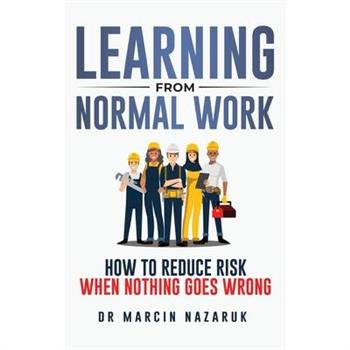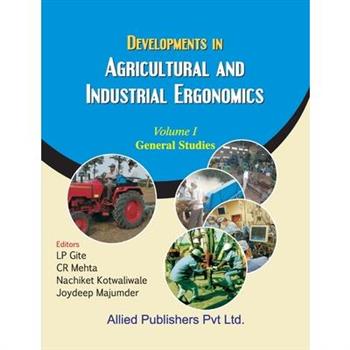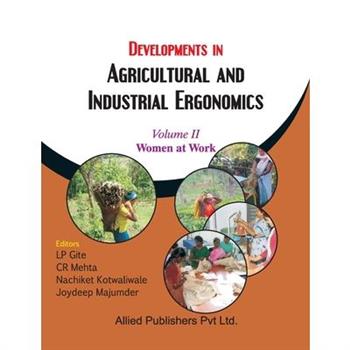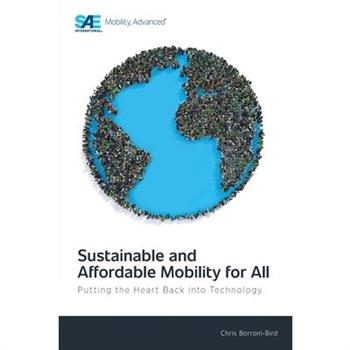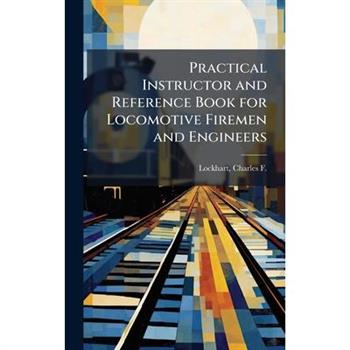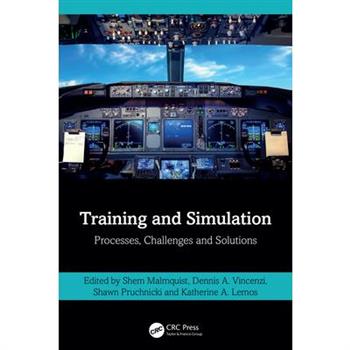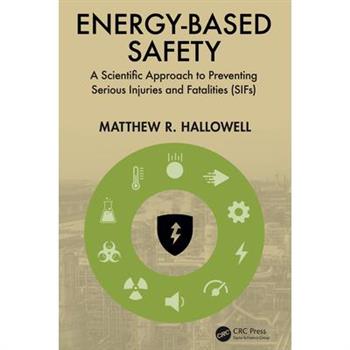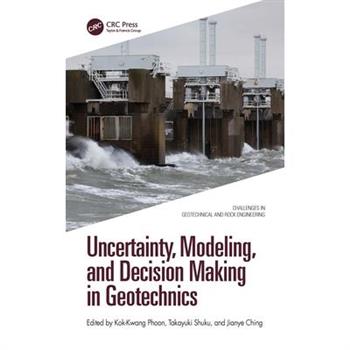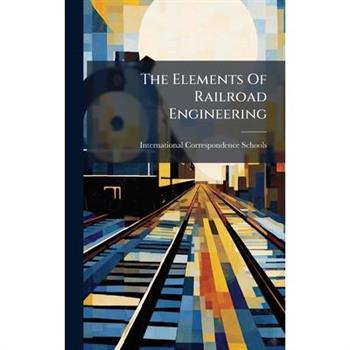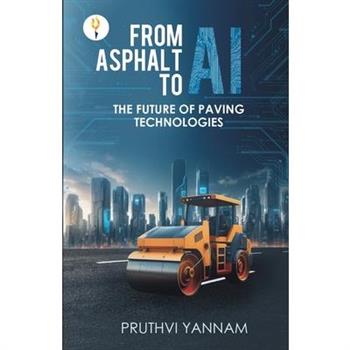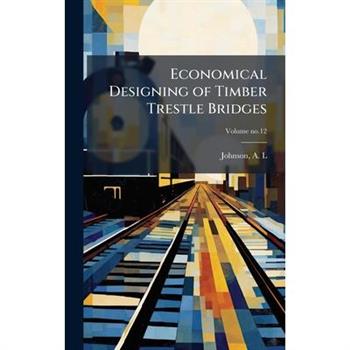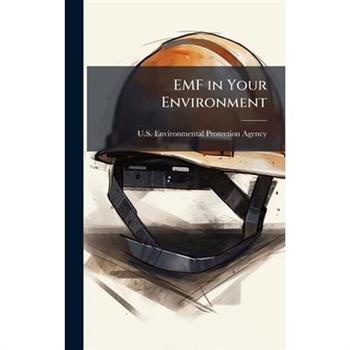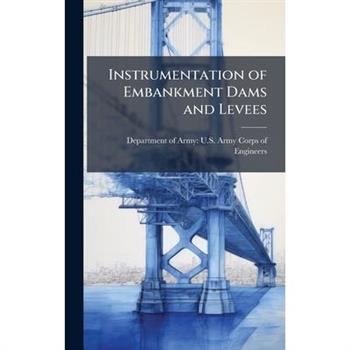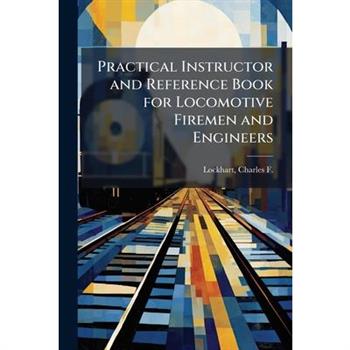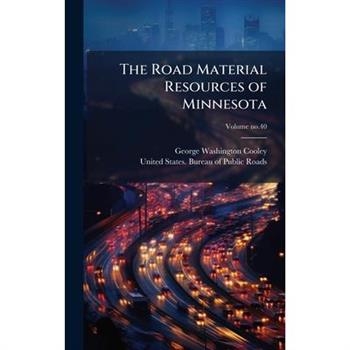Learning from Normal Work
No incidents. No injuries. Everything looks fine until it isn't. We often ask, "What caused the accident?" But what if we asked: "What was happening before it went wrong?"This book is built around a simple idea: the seeds of failure are often planted in success.It follows John, a senior Safety Director navigating the complex, and all-too-real journey of implementing Learning from Normal Work in a large organization.This isn't a textbook. It's a novel-style guide, rooted in real-world tools, authentic situations, and practical strategies drawn from the author's decades of experience implementing Learning From Normal Work across global organizations. And yes, it's a novel. Because we remember stories better than theories.The dialogues are pulled straight from the field, from boardroom debates to frontline frustrations. They capture the political dynamics, cultural resistance, and mindset shifts required to make meaningful change.Whether you're a leader, practitioner, or advisor, you'll find a practical roadmap woven into the narrative, one that highlights not only the 'what' and the 'how', but also the often-overlooked human elements that determine success or failure.Inside you'll discover: What to realistically expect when rolling out Learning from Normal Work.How to manage resistance and influence leadership.Why traditional safety tools fall short and what needs to change.The mindsets, toolsets, and skillsets essential for transformation.If you want to start learning when nothing goes wrong, this book is your essential guide.
Learning from Normal Work
No incidents. No injuries. Everything looks fine until it isn't. We often ask, "What caused the accident?" But what if we asked: "What was happening before it went wrong?"This book is built around a simple idea: the seeds of failure are often planted in success.It follows John, a senior Safety Director navigating the complex, and all-too-real journey of implementing Learning from Normal Work in a large organization.This isn't a textbook. It's a novel-style guide, rooted in real-world tools, authentic situations, and practical strategies drawn from the author's decades of experience implementing Learning From Normal Work across global organizations. And yes, it's a novel. Because we remember stories better than theories.The dialogues are pulled straight from the field, from boardroom debates to frontline frustrations. They capture the political dynamics, cultural resistance, and mindset shifts required to make meaningful change.Whether you're a leader, practitioner, or advisor, you'll find a practical roadmap woven into the narrative, one that highlights not only the 'what' and the 'how', but also the often-overlooked human elements that determine success or failure.Inside you'll discover: What to realistically expect when rolling out Learning from Normal Work.How to manage resistance and influence leadership.Why traditional safety tools fall short and what needs to change.The mindsets, toolsets, and skillsets essential for transformation.If you want to start learning when nothing goes wrong, this book is your essential guide.
Developments in Agricultural and Industrial Ergonomics (General Studies, Vol. 1)
This book presents the proceedings from the International Ergonomics Conference, HWWE-2007, held at the Central Institute of Agricultural Engineering in Bhopal. The compiled research, titled "Developments in Agricultural and Industrial Ergonomics," is published across two comprehensive volumes. This particular volume encompasses a wide spectrum of critical ergonomic research.It features dedicated sections on foundational topics such as Anthropometry and Work Place Design, which are essential for creating efficient and safe environments. The section on Work and Sport Physiology explores human physical capabilities and limits. Further chapters delve into the effects of the Physical Environment and the growing field of Cognitive and Design Ergonomics.A significant focus is placed on practical applications, with extensive research presented on Ergonomics in Agriculture and Industry. These sections address the unique challenges faced in these vital sectors. Finally, the volume includes crucial studies on Occupational Health and Safety, underscoring the discipline's ultimate goal: enhancing human well-being and overall system performance through scientifically informed design.
Developments in Agricultural and Industrial Ergonomics (Women at Work, Vol. 2)
This book is a vital compilation of research presented at the International Ergonomics Conference, HWWE-2007, hosted by the Central Institute of Agricultural Engineering in Bhopal. As part of the two-volume proceedings titled "Developments in Agricultural and Industrial Ergonomics," this specific text is dedicated to a crucial and often underrepresented area of study. It focuses exclusively on the ergonomic challenges and considerations for women across different spheres of their lives.The volume is thoughtfully organized into two comprehensive sections. The first, "Women in Agriculture," delves into the physical demands and specific risks faced by women working in the agricultural sector. It presents studies aimed at designing better tools, practices, and environments to enhance their safety, health, and productivity.The second section, "Women at Work and Home," broadens the scope to address the diverse ergonomic needs in various occupational settings beyond farming, as well as within the domestic environment. This dual approach provides a holistic examination of the factors affecting women's well-being and performance, making the volume an essential resource for ergonomists, designers, policymakers, and anyone committed to creating equitable, efficient, and safe spaces for women.
Sustainable and Affordable Mobility for All
Sustainable and Affordable Mobility for All offers a bold, yet practical vision for the future of transportation. Drawing from deep technical expertise and global experience, Chris Borroni-Bird presents a transformative approach to the automotive industry, tackling critical issues like economic development, environmental sustainability, and universal access.This groundbreaking book explores how advanced technologies such as electric, autonomous, and connected vehicles can revolutionize not only personal mobility but also urban transport and public systems. It calls for a shift toward "right-sized" vehicles, designed to meet real-world needs without over-engineering. Borroni-Bird's solutions are scalable and adaptable to both developed and developing markets, ensuring affordable and sustainable mobility for all.With insights from 30 years of rapid innovation, including ridesharing platforms and robotaxis, this book blends technology, human factors, and sustainability to inspire a future where transportation is efficient, accessible, and environmentally responsible.A must-read for industry leaders, strategists, and innovators, Sustainable and Affordable Mobility for All advocates for a world where we put the heart back into technology - making mobility solutions that work for people, planet, and profit. Join the movement for a smarter, more sustainable future in transportation.
Conveyors
This new edition continues on its journey of being an introduction to the wide variety of conveyor types and application methods available. It discusses conveyor and system design and in its new edition, expands on information about sorters and motorized roller conveyors, new information on robotic interfaces, as well as some of the trade-offs made when conveyor design rules are intentionally broken. Each chapter now also includes questions and problems to help reinforce the material covered.Conveyors: Application, Selection, and Integration includes a pictorial of various installations of conveyors in detail that the reader can model after. It presents common application mistakes made and discusses how the reader can avoid them in the future during the integration process. The book focuses on conveyor application information that is offered in just this book and discusses the effect that extreme temperatures have while providing real-life examples of conveyor system design that may at times break common design rules.This book is a resource for engineers, managers, and executives who want to gain a better understanding of conveyors and their application. It is also for colleges and universities that offer industrial and/or manufacturing engineering curricula.
Proceedings of the Munich Symposium on Lightweight Design 2024
Frugal Engineering
In view of increasing socio-economic and ecological challenges, Timo Achtelik sheds a critical light on the ongoing incremental optimization of existing innovations, which can lead to a state of "over-engineering". As part of a multi-year action research project in the context of automotive materials development, it is investigated whether and how reduction-oriented innovation approaches such as "frugal engineering" can have an entrepreneurial impact. The findings demonstrate how frugality can be successfully integrated into existing development processes to create more sustainable and efficient innovations. This presents a crucial opportunity for companies to maintain and strengthen their competitiveness in the global market.
Practical Instructor and Reference Book for Locomotive Firemen and Engineers
A comprehensive guide for locomotive firemen and engineers, "Practical Instructor and Reference Book for Locomotive Firemen and Engineers" by Charles F. Lockhart, offers a detailed exploration into the operation and maintenance of steam locomotives. Originally published in 1916, this book provides practical instruction suitable for both novice and experienced railroad professionals. The treatise covers a wide range of topics, from the fundamental principles of steam engine technology to advanced techniques in locomotive handling and fuel efficiency. This historical text serves as an invaluable resource for understanding the intricacies of early 20th-century railroad engineering and offers insights into the daily lives and responsibilities of those who operated these powerful machines.This work has been selected by scholars as being culturally important, and is part of the knowledge base of civilization as we know it. This work was reproduced from the original artifact, and remains as true to the original work as possible. Therefore, you will see the original copyright references, library stamps (as most of these works have been housed in our most important libraries around the world), and other notations in the work.This work is in the public domain in the United States of America, and possibly other nations. Within the United States, you may freely copy and distribute this work, as no entity (individual or corporate) has a copyright on the body of the work.As a reproduction of a historical artifact, this work may contain missing or blurred pages, poor pictures, errant marks, etc. Scholars believe, and we concur, that this work is important enough to be preserved, reproduced, and made generally available to the public. We appreciate your support of the preservation process, and thank you for being an important part of keeping this knowledge alive and relevant.
Training and Simulation
Developing training and simulation is a complex business. From understanding human performance design, usability and the limitations of training types to considerations with virtual reality (VR), producing realistic scenarios and even helping accident investigations leaves the practitioner with almost an overwhelming challenge. However, they know that their goal is to cut out developing methods that can train and test the sharp-end professional to be ready for any eventuality whether in the air, a chemical plant or the operating room. Through chapters written by leading experts, this book aims to address the key questions and concerns when developing training and simulation in high-risk industries.This book identifies unexplored challenges and weaknesses in the aviation domain, including ground-based training and flight simulation compared to the real world of in-flight complex aircraft operations, aviation accidents and incidents, airspace and air traffic control, aeronautical communications, air navigation, aircraft automation, and pilot certification and testing.These concerns are not just relevant to aviation, however. This book pushes beyond aviation to include other fields, including petrochemical and medicine, that, while on the surface are different, include some of the same human and organizational challenges.It integrates machine challenges with human factors science and includes a view of the corporate influences on training. Safety is a consideration in all the challenges and current limitations in training and simulation, and the book is written with the intention of improving both training and safety as industries deal with more and more complex advanced technology.Underpinned by case studies and real-life examples, this book will give the reader a thorough overview of the limitations of current training methods but with a view to improving and developing better methods for future training scenarios. Opportunities and solutions are presented for current or future research and the application and incorporation of these in day-day operations.Training and Simulation: Processes, Challenges and Solutions will appeal to practitioners of human factors, training, pilots and ground operators, engineers involved in systems design, safety specialists, test evaluators, and accident investigators across multiple domains.
Wood Paving in the United States
"Wood Paving in the United States, Volume no. 141" by C.L. Hill offers a detailed look at the history and implementation of wood paving as a method for constructing roads and streets in the United States during the late 19th and early 20th centuries. The book provides insights into the materials, techniques, and challenges associated with this once-popular paving solution.Exploring aspects such as the selection of wood, the construction process, and the maintenance requirements, Hill's work serves as a valuable resource for understanding the historical context of urban infrastructure development. This volume provides a comprehensive overview of a bygone era in civil engineering, illustrating how wood paving contributed to the growth and modernization of American cities.This work has been selected by scholars as being culturally important, and is part of the knowledge base of civilization as we know it. This work was reproduced from the original artifact, and remains as true to the original work as possible. Therefore, you will see the original copyright references, library stamps (as most of these works have been housed in our most important libraries around the world), and other notations in the work.This work is in the public domain in the United States of America, and possibly other nations. Within the United States, you may freely copy and distribute this work, as no entity (individual or corporate) has a copyright on the body of the work.As a reproduction of a historical artifact, this work may contain missing or blurred pages, poor pictures, errant marks, etc. Scholars believe, and we concur, that this work is important enough to be preserved, reproduced, and made generally available to the public. We appreciate your support of the preservation process, and thank you for being an important part of keeping this knowledge alive and relevant.
Continuous, Revolving Drawbridges
Continuous, Revolving Drawbridges delves into the intricate principles of constructing and calculating the strains within these complex structures, with a particular focus on designing continuous panel girders. Penned by Clemens Herschel, this book provides a detailed examination of the engineering considerations essential for building reliable and efficient drawbridges.This book offers engineers and students alike a valuable resource for understanding the mechanics and design processes involved in creating these vital transportation links. Explore the technical aspects and theoretical underpinnings that make continuous, revolving drawbridges a fascinating subject of study.This work has been selected by scholars as being culturally important, and is part of the knowledge base of civilization as we know it. This work was reproduced from the original artifact, and remains as true to the original work as possible. Therefore, you will see the original copyright references, library stamps (as most of these works have been housed in our most important libraries around the world), and other notations in the work.This work is in the public domain in the United States of America, and possibly other nations. Within the United States, you may freely copy and distribute this work, as no entity (individual or corporate) has a copyright on the body of the work.As a reproduction of a historical artifact, this work may contain missing or blurred pages, poor pictures, errant marks, etc. Scholars believe, and we concur, that this work is important enough to be preserved, reproduced, and made generally available to the public. We appreciate your support of the preservation process, and thank you for being an important part of keeping this knowledge alive and relevant.
Wood Paving in the United States
"Wood Paving in the United States, Volume no. 141" by C.L. Hill offers a detailed look at the history and implementation of wood paving as a method for constructing roads and streets in the United States during the late 19th and early 20th centuries. The book provides insights into the materials, techniques, and challenges associated with this once-popular paving solution.Exploring aspects such as the selection of wood, the construction process, and the maintenance requirements, Hill's work serves as a valuable resource for understanding the historical context of urban infrastructure development. This volume provides a comprehensive overview of a bygone era in civil engineering, illustrating how wood paving contributed to the growth and modernization of American cities.This work has been selected by scholars as being culturally important, and is part of the knowledge base of civilization as we know it. This work was reproduced from the original artifact, and remains as true to the original work as possible. Therefore, you will see the original copyright references, library stamps (as most of these works have been housed in our most important libraries around the world), and other notations in the work.This work is in the public domain in the United States of America, and possibly other nations. Within the United States, you may freely copy and distribute this work, as no entity (individual or corporate) has a copyright on the body of the work.As a reproduction of a historical artifact, this work may contain missing or blurred pages, poor pictures, errant marks, etc. Scholars believe, and we concur, that this work is important enough to be preserved, reproduced, and made generally available to the public. We appreciate your support of the preservation process, and thank you for being an important part of keeping this knowledge alive and relevant.
Anthropometry
Today, human factors and ergonomics professionals worldwide contribute to the design and evaluation of tasks, jobs, products, environments, and systems in order to make them compatible with the needs, abilities, and limitations of people. By understanding anthropometry, professionals can ensure that our home and working environments are comfortable and designed with the human in mind. This book aims to show how an understanding of anthropometrics can influence workspace design, ergonomics in the office, ergonomics in the home, and health and safety at work.This book discusses the measurement of the human body and human variability. Anthropometry may seem to be relatively simple but the reality is that it focuses on very sophisticated aspects of how to make the products tailor-made to suit specific requirements. As a study, it is useful for a variety of purposes such as workspace design, ergonomics in the office, ergonomics in the home, and health and safety at work. These eleven chapters investigate anthropometrics and bridge the gap between theory and practice. Each chapter is supported by tables, charts, and illustrations, and a wide list of bibliographic references. The reader will develop new insights into the principles and practice of anthropometrics with this book bringing the topic right up to date.Anthropometry: Human Body Measurements and How to Use Them will be of interest to students, graduates, teachers, researchers, and general workers in industrial design, ergonomics, rehabilitation, safety, and health.
Ultraprecision Machining and Metrology
This comprehensive introduction to ultraprecision machining and metrology provides an essential foundation for students and engineers, offering an in-depth analysis of key methods, technologies and practical applications.
Energy-Based Safety
For the past two decades, workplace safety has improved in reducing minor injuries, yet the rate of serious injuries and fatalities (SIFs) has remained unchanged. Research has revealed that the hazards causing minor injuries are not the same as those leading to fatalities, making traditional safety approaches insufficient. Energy-Based Safety: A Scientific Approach to Preventing Serious Injuries and Fatalities (SIFs) presents a science-backed strategy for SIF prevention, built on four core principles that emphasize the role of hazardous energy, the power of effective controls, and the critical influence of workers in shaping safety outcomes.This book is a useful resource for those committed to saving lives and delivering change in workplace safety through new ways of injury prevention. Divided into two parts, it firstly explores the research behind EBS and investigates each principle with evidence, case studies, and practical insights from real-world implementation. The second part focuses on incorporating EBS into existing safety practices, from design and work planning to incident learning and performance measurement.Through reading this book, readers will gain practicable tools and methods to enhance safety programs, making SIF prevention effective and sustainable in their workplace Written for safety professionals, Energy-Based Safety: A Scientific Approach to Preventing Serious Injuries and Fatalities (SIFs) is an enlightening read for industry leaders in occupational health and safety and practitioners responsible for workplace safety and occupational risk.
Uncertainty, Modeling, and Decision Making in Geotechnics
Uncertainty, Modeling, and Decision Making in Geotechnics shows how uncertainty quantification and numerical modeling can complement each other to enhance decision-making in geotechnical practice, filling a critical gap in guiding practitioners to address uncertainties directly.The book helps practitioners acquire a working knowledge of geotechnical risk and reliability methods and guides them to use these methods wisely in conjunction with data and numerical modeling. In particular, it provides guidance on the selection of realistic statistics and a cost-effective, accessible method to address different design objectives, and for different problem settings, and illustrates the value of this to decision-making using realistic examples.Bringing together statistical characterization, reliability analysis, reliability-based design, probabilistic inverse analysis, and physical insights drawn from case studies, this reference guide from an international team of experts offers an excellent resource for state-of-the-practice uncertainty-informed geotechnical design for specialist practitioners and the research community.
Illustrated Catalogue A
Discover the industrial heritage of the Chandler Pump Company with this meticulously reproduced 'Illustrated Catalogue A.' Originally published around 1900, this catalog offers a fascinating glimpse into the manufacturing and engineering practices of the late 19th century. Featuring detailed illustrations and specifications of Chandler pumps, it provides invaluable insights for historians, engineers, and collectors interested in the evolution of hydraulic technology and American manufacturing. This catalog showcases the ingenuity and craftsmanship of the Chandler Pump Co. of Cedar Rapids, Iowa, a prominent manufacturer of pumps for various applications. Explore the designs, functionalities, and technological advancements that defined an era. 'Illustrated Catalogue A' is a valuable resource for understanding the industrial landscape and technological progress of the United States during a pivotal period of innovation and growth.This work has been selected by scholars as being culturally important, and is part of the knowledge base of civilization as we know it. This work was reproduced from the original artifact, and remains as true to the original work as possible. Therefore, you will see the original copyright references, library stamps (as most of these works have been housed in our most important libraries around the world), and other notations in the work.This work is in the public domain in the United States of America, and possibly other nations. Within the United States, you may freely copy and distribute this work, as no entity (individual or corporate) has a copyright on the body of the work.As a reproduction of a historical artifact, this work may contain missing or blurred pages, poor pictures, errant marks, etc. Scholars believe, and we concur, that this work is important enough to be preserved, reproduced, and made generally available to the public. We appreciate your support of the preservation process, and thank you for being an important part of keeping this knowledge alive and relevant.
Problems Of Pressmanship
Problems Of Pressmanship delves into the intricacies of operating a printing press, offering insights into the challenges and solutions encountered in industrial printing. This book provides practical guidance for press operators, focusing on optimizing performance and troubleshooting common issues.While techniques and technology have evolved, the core principles of effective press operation remain relevant. Readers interested in the history of printing technology or those seeking a deeper understanding of the mechanical processes behind mass communication will find this a valuable resource. "Problems Of Pressmanship" serves as a testament to the ingenuity required to bring words and images to life through the printed page.This work has been selected by scholars as being culturally important, and is part of the knowledge base of civilization as we know it. This work was reproduced from the original artifact, and remains as true to the original work as possible. Therefore, you will see the original copyright references, library stamps (as most of these works have been housed in our most important libraries around the world), and other notations in the work.This work is in the public domain in the United States of America, and possibly other nations. Within the United States, you may freely copy and distribute this work, as no entity (individual or corporate) has a copyright on the body of the work.As a reproduction of a historical artifact, this work may contain missing or blurred pages, poor pictures, errant marks, etc. Scholars believe, and we concur, that this work is important enough to be preserved, reproduced, and made generally available to the public. We appreciate your support of the preservation process, and thank you for being an important part of keeping this knowledge alive and relevant.
The Elements Of Railroad Engineering
"The Elements of Railroad Engineering: Tables and Formulas," compiled by the International Correspondence Schools, is a practical reference work designed for engineers and students involved in railroad construction and maintenance. This book provides essential tables and formulas necessary for solving common engineering problems encountered in the field.Focusing on clarity and ease of use, the compilation covers topics such as track alignment, curve calculations, earthwork volumes, and bridge design. Each section includes detailed explanations and examples to aid in the application of the formulas. This work serves as a valuable tool for both on-site engineers and those in the classroom, providing a foundation for understanding the principles of railroad engineering.This edition retains the original's focus on practical application, making it a useful resource for anyone seeking a concise collection of key engineering data.This work has been selected by scholars as being culturally important, and is part of the knowledge base of civilization as we know it. This work was reproduced from the original artifact, and remains as true to the original work as possible. Therefore, you will see the original copyright references, library stamps (as most of these works have been housed in our most important libraries around the world), and other notations in the work.This work is in the public domain in the United States of America, and possibly other nations. Within the United States, you may freely copy and distribute this work, as no entity (individual or corporate) has a copyright on the body of the work.As a reproduction of a historical artifact, this work may contain missing or blurred pages, poor pictures, errant marks, etc. Scholars believe, and we concur, that this work is important enough to be preserved, reproduced, and made generally available to the public. We appreciate your support of the preservation process, and thank you for being an important part of keeping this knowledge alive and relevant.
Discussion Of Secondary Stresses In An Ordinary Truss Bridge
"Discussion Of Secondary Stresses In An Ordinary Truss Bridge" by John Howell Griffith is a detailed examination of the complexities involved in bridge engineering. This work delves into the often-overlooked secondary stresses that can significantly impact the structural integrity and longevity of truss bridges. Griffith's analysis offers valuable insights for civil engineers and students alike, providing a comprehensive understanding of the factors contributing to stress distribution within bridge structures. The book meticulously explores the dynamics at play, making it an essential resource for those involved in the design, maintenance, and assessment of truss bridges. Its enduring value lies in its ability to enhance the reader's understanding of structural mechanics and the nuanced aspects of bridge engineering.This work has been selected by scholars as being culturally important, and is part of the knowledge base of civilization as we know it. This work was reproduced from the original artifact, and remains as true to the original work as possible. Therefore, you will see the original copyright references, library stamps (as most of these works have been housed in our most important libraries around the world), and other notations in the work.This work is in the public domain in the United States of America, and possibly other nations. Within the United States, you may freely copy and distribute this work, as no entity (individual or corporate) has a copyright on the body of the work.As a reproduction of a historical artifact, this work may contain missing or blurred pages, poor pictures, errant marks, etc. Scholars believe, and we concur, that this work is important enough to be preserved, reproduced, and made generally available to the public. We appreciate your support of the preservation process, and thank you for being an important part of keeping this knowledge alive and relevant.
Illustrated Catalogue A
Discover the industrial heritage of the Chandler Pump Company with this meticulously reproduced 'Illustrated Catalogue A.' Originally published around 1900, this catalog offers a fascinating glimpse into the manufacturing and engineering practices of the late 19th century. Featuring detailed illustrations and specifications of Chandler pumps, it provides invaluable insights for historians, engineers, and collectors interested in the evolution of hydraulic technology and American manufacturing. This catalog showcases the ingenuity and craftsmanship of the Chandler Pump Co. of Cedar Rapids, Iowa, a prominent manufacturer of pumps for various applications. Explore the designs, functionalities, and technological advancements that defined an era. 'Illustrated Catalogue A' is a valuable resource for understanding the industrial landscape and technological progress of the United States during a pivotal period of innovation and growth.This work has been selected by scholars as being culturally important, and is part of the knowledge base of civilization as we know it. This work was reproduced from the original artifact, and remains as true to the original work as possible. Therefore, you will see the original copyright references, library stamps (as most of these works have been housed in our most important libraries around the world), and other notations in the work.This work is in the public domain in the United States of America, and possibly other nations. Within the United States, you may freely copy and distribute this work, as no entity (individual or corporate) has a copyright on the body of the work.As a reproduction of a historical artifact, this work may contain missing or blurred pages, poor pictures, errant marks, etc. Scholars believe, and we concur, that this work is important enough to be preserved, reproduced, and made generally available to the public. We appreciate your support of the preservation process, and thank you for being an important part of keeping this knowledge alive and relevant.
America's Textile Reporter
America's Textile Reporter, Volume 13, offers a detailed snapshot of the American textile industry at the turn of the 20th century. This historical journal provides invaluable insights into the manufacturing processes, technological advancements, and economic factors shaping one of America's vital sectors. From detailed reports on factory operations to discussions of market trends, this volume captures the day-to-day realities and long-term challenges faced by textile manufacturers and workers alike.A crucial resource for historians, economists, and anyone interested in the industrial history of the United States, 'America's Textile Reporter' sheds light on a transformative period in American manufacturing. This volume is a testament to the ingenuity and hard work that propelled the American textile industry to the forefront of global commerce.This work has been selected by scholars as being culturally important, and is part of the knowledge base of civilization as we know it. This work was reproduced from the original artifact, and remains as true to the original work as possible. Therefore, you will see the original copyright references, library stamps (as most of these works have been housed in our most important libraries around the world), and other notations in the work.This work is in the public domain in the United States of America, and possibly other nations. Within the United States, you may freely copy and distribute this work, as no entity (individual or corporate) has a copyright on the body of the work.As a reproduction of a historical artifact, this work may contain missing or blurred pages, poor pictures, errant marks, etc. Scholars believe, and we concur, that this work is important enough to be preserved, reproduced, and made generally available to the public. We appreciate your support of the preservation process, and thank you for being an important part of keeping this knowledge alive and relevant.
Continuous, Revolving Drawbridges
Continuous, Revolving Drawbridges delves into the intricate principles of constructing and calculating the strains within these complex structures, with a particular focus on designing continuous panel girders. Penned by Clemens Herschel, this book provides a detailed examination of the engineering considerations essential for building reliable and efficient drawbridges.This book offers engineers and students alike a valuable resource for understanding the mechanics and design processes involved in creating these vital transportation links. Explore the technical aspects and theoretical underpinnings that make continuous, revolving drawbridges a fascinating subject of study.This work has been selected by scholars as being culturally important, and is part of the knowledge base of civilization as we know it. This work was reproduced from the original artifact, and remains as true to the original work as possible. Therefore, you will see the original copyright references, library stamps (as most of these works have been housed in our most important libraries around the world), and other notations in the work.This work is in the public domain in the United States of America, and possibly other nations. Within the United States, you may freely copy and distribute this work, as no entity (individual or corporate) has a copyright on the body of the work.As a reproduction of a historical artifact, this work may contain missing or blurred pages, poor pictures, errant marks, etc. Scholars believe, and we concur, that this work is important enough to be preserved, reproduced, and made generally available to the public. We appreciate your support of the preservation process, and thank you for being an important part of keeping this knowledge alive and relevant.
America's Textile Reporter
America's Textile Reporter, Volume 13, offers a detailed snapshot of the American textile industry at the turn of the 20th century. This historical journal provides invaluable insights into the manufacturing processes, technological advancements, and economic factors shaping one of America's vital sectors. From detailed reports on factory operations to discussions of market trends, this volume captures the day-to-day realities and long-term challenges faced by textile manufacturers and workers alike.A crucial resource for historians, economists, and anyone interested in the industrial history of the United States, 'America's Textile Reporter' sheds light on a transformative period in American manufacturing. This volume is a testament to the ingenuity and hard work that propelled the American textile industry to the forefront of global commerce.This work has been selected by scholars as being culturally important, and is part of the knowledge base of civilization as we know it. This work was reproduced from the original artifact, and remains as true to the original work as possible. Therefore, you will see the original copyright references, library stamps (as most of these works have been housed in our most important libraries around the world), and other notations in the work.This work is in the public domain in the United States of America, and possibly other nations. Within the United States, you may freely copy and distribute this work, as no entity (individual or corporate) has a copyright on the body of the work.As a reproduction of a historical artifact, this work may contain missing or blurred pages, poor pictures, errant marks, etc. Scholars believe, and we concur, that this work is important enough to be preserved, reproduced, and made generally available to the public. We appreciate your support of the preservation process, and thank you for being an important part of keeping this knowledge alive and relevant.
Human Factors and Safety Culture
This title explores human behavior in the context of workplace safety and risk management. Focused on understanding how people respond to danger and how leaders can put safety at the heart of their organizations' culture, it draws on the latest scientific insights from neuroscience, psychology, and behavioral economics.
Multiphase Flows in Deformable Geomaterials
Multiscale coupling of multiphase flow and multicomponents within a deformable porous medium is complex and interdisciplinary. Chemo-physical coupled mixture theory and non-linear thermodynamics processes can be used to to derive multi-phase transport equations and mechanics. This book is particularly addressed to geoengineering.
Excellence in Air Show Performers
This book propels readers deeper into the exhilarating world of air show performances. Serving as a comprehensive sequel to its predecessor, it builds upon the foundational insights of the first volume and offers a meticulous exploration of what distinguishes exceptional performances amidst the high-stakes environment of air shows.
From Asphalt to AI
Where Roads Meet Intelligence.This groundbreaking book explores how Artificial Intelligence (AI), IoT, smart materials, and sustainable design are transforming the paving and infrastructure industry-from asphalt mix optimization to real-time road safety and carbon-conscious construction.���� Inside This Book: How AI is being used to predict pavement failures before they happenIntelligent road safety systems that protect workers and driversSustainable construction methods with real-time emissions trackingCase studies of tools like PaveIQ, GeoZoneGuard, and EcoQuantFuture vision: autonomous paving, smart work zones, carbon-neutral roads���� Who Should Read This: Civil Engineers, Road Construction Professionals, and Infrastructure PlannersSmart City Developers & Transportation Policy ExpertsStudents and Researchers in AI, Engineering, and Urban PlanningSustainability Consultants and Government Agencies✍ About the Author: Pruthvi Yannam is an innovator at the intersection of infrastructure, AI, and sustainability. With multiple patent-pending tools deployed across India and the U.S., he brings a bold vision backed by real-world development-from work zone alert systems to AI-based mix optimization. His work supports both national infrastructure goals and global climate action.���� Available in Paperback & Kindle Cataloged by leading academic and industry platforms."Not just a book, but a roadmap to the roads of the future."
Engineering Research Infrastructures for European Synergies
This open access book highlights the latest advances, innovations, and applications in the field of earthquake engineering, as presented by leading international researchers and engineers at the International Workshop in Engineering Research Infrastructures for European Synergies (ERIES-IW), held in Lisbon, Portugal, on May 7-9, 2025. The event was meant to provide a unique platform to exchange experiences, share results, and explore future directions in seismic, wind, and geotechnical engineering research, with a focus on reducing hazard-related losses, managing risk, and fostering sustainable solutions. The contributions, which were selected by means of a rigorous international peer-review process, present a wealth of exciting ideas that will open novel research directions and foster multidisciplinary collaboration among different specialists.
Ufc 3-220-10n
Unified Facilities Criteria (UFC) documents provide planning, design, construction, sustainment, restoration, and modernization criteria. They also apply to the Military Departments, the Defense Agencies, and the DoD Field Activities in accordance with USD (AT&L) Memorandum dated 29 May 2002. The United States Army Corps of Engineers (HQUSACE), Naval Facilities Engineering Command (NAVFAC) and the Office of the Air Force Civil Engineer are responsible for administration of the UFC system. This is one of those documents.This work has been selected by scholars as being culturally important, and is part of the knowledge base of civilization as we know it. This work was reproduced from the original artifact, and remains as true to the original work as possible. Therefore, you will see the original copyright references, library stamps (as most of these works have been housed in our most important libraries around the world), and other notations in the work.This work is in the public domain in the United States of America, and possibly other nations. Within the United States, you may freely copy and distribute this work, as no entity (individual or corporate) has a copyright on the body of the work.As a reproduction of a historical artifact, this work may contain missing or blurred pages, poor pictures, errant marks, etc. Scholars believe, and we concur, that this work is important enough to be preserved, reproduced, and made generally available to the public. We appreciate your support of the preservation process, and thank you for being an important part of keeping this knowledge alive and relevant.
Air Brakes, by Annis
"Air Brakes" by Thomas A. Annis offers a detailed exploration of the Westinghouse and New York air brake systems and signal systems as applied to railroads. Originally published in 1912, this treatise provides a practical and comprehensive guide to understanding the mechanics and operation of these critical technologies. The book includes a substantial list of practical examination questions and answers relevant to both Westinghouse and New York air brakes, making it an invaluable resource for those studying or working with railway systems of the early 20th century. A significant historical document, "Air Brakes" offers insights into the engineering practices and technological advancements that shaped the development of modern rail transport.This work has been selected by scholars as being culturally important, and is part of the knowledge base of civilization as we know it. This work was reproduced from the original artifact, and remains as true to the original work as possible. Therefore, you will see the original copyright references, library stamps (as most of these works have been housed in our most important libraries around the world), and other notations in the work.This work is in the public domain in the United States of America, and possibly other nations. Within the United States, you may freely copy and distribute this work, as no entity (individual or corporate) has a copyright on the body of the work.As a reproduction of a historical artifact, this work may contain missing or blurred pages, poor pictures, errant marks, etc. Scholars believe, and we concur, that this work is important enough to be preserved, reproduced, and made generally available to the public. We appreciate your support of the preservation process, and thank you for being an important part of keeping this knowledge alive and relevant.
The Road Material Resources of Minnesota
"The Road Material Resources of Minnesota, Volume no.40" offers a comprehensive survey of the geological resources available for road construction in Minnesota at the beginning of the 20th century. Authored by George Washington Cooley in collaboration with the United States Bureau of Public Roads, this volume details the types and distribution of materials such as gravel, rock, and soil suitable for building and maintaining roads. The book likely provides insights into the methods of material testing and analysis prevalent at the time, offering a valuable snapshot of early highway engineering practices. This historical record is essential for understanding the development of infrastructure and transportation networks in the United States and the evolving field of civil engineering. For researchers, historians, and anyone interested in the history of road construction and geological resource management, this book offers a unique perspective on the challenges and solutions of its era.This work has been selected by scholars as being culturally important, and is part of the knowledge base of civilization as we know it. This work was reproduced from the original artifact, and remains as true to the original work as possible. Therefore, you will see the original copyright references, library stamps (as most of these works have been housed in our most important libraries around the world), and other notations in the work.This work is in the public domain in the United States of America, and possibly other nations. Within the United States, you may freely copy and distribute this work, as no entity (individual or corporate) has a copyright on the body of the work.As a reproduction of a historical artifact, this work may contain missing or blurred pages, poor pictures, errant marks, etc. Scholars believe, and we concur, that this work is important enough to be preserved, reproduced, and made generally available to the public. We appreciate your support of the preservation process, and thank you for being an important part of keeping this knowledge alive and relevant.
EMF in Your Environment
The U.S. Environmental Protection Agency (EPA) was introduced on December 2, 1970 by President Richard Nixon. The agency is charged with protecting human health and the environment, by writing and enforcing regulations based on laws passed by Congress. The EPA's struggle to protect health and the environment is seen through each of its official publications. These publications outline new policies, detail problems with enforcing laws, document the need for new legislation, and describe new tactics to use to solve these issues. This collection of publications ranges from historic documents to reports released in the new millennium, and features works like: Bicycle for a Better Environment, Health Effects of Increasing Sulfur Oxides Emissions Draft, and Women and Environmental Health.This work has been selected by scholars as being culturally important, and is part of the knowledge base of civilization as we know it. This work was reproduced from the original artifact, and remains as true to the original work as possible. Therefore, you will see the original copyright references, library stamps (as most of these works have been housed in our most important libraries around the world), and other notations in the work.This work is in the public domain in the United States of America, and possibly other nations. Within the United States, you may freely copy and distribute this work, as no entity (individual or corporate) has a copyright on the body of the work.As a reproduction of a historical artifact, this work may contain missing or blurred pages, poor pictures, errant marks, etc. Scholars believe, and we concur, that this work is important enough to be preserved, reproduced, and made generally available to the public. We appreciate your support of the preservation process, and thank you for being an important part of keeping this knowledge alive and relevant.
Economical Designing of Timber Trestle Bridges
Economical Designing of Timber Trestle Bridges, Volume 12, by A. L. Johnson, offers a detailed exploration of timber bridge construction at the turn of the 20th century. This volume provides insights into the design principles and practical considerations for building durable and cost-effective timber trestle bridges. It is invaluable for engineers, historians, and anyone interested in the evolution of civil engineering practices. Detailing the methods and materials used during this period, this book serves as a crucial resource for understanding the historical context of bridge construction and the challenges faced by engineers of the era. This book offers a blend of theoretical knowledge and practical application, making it a significant contribution to the field of civil engineering.This work has been selected by scholars as being culturally important, and is part of the knowledge base of civilization as we know it. This work was reproduced from the original artifact, and remains as true to the original work as possible. Therefore, you will see the original copyright references, library stamps (as most of these works have been housed in our most important libraries around the world), and other notations in the work.This work is in the public domain in the United States of America, and possibly other nations. Within the United States, you may freely copy and distribute this work, as no entity (individual or corporate) has a copyright on the body of the work.As a reproduction of a historical artifact, this work may contain missing or blurred pages, poor pictures, errant marks, etc. Scholars believe, and we concur, that this work is important enough to be preserved, reproduced, and made generally available to the public. We appreciate your support of the preservation process, and thank you for being an important part of keeping this knowledge alive and relevant.
EMF in Your Environment
The U.S. Environmental Protection Agency (EPA) was introduced on December 2, 1970 by President Richard Nixon. The agency is charged with protecting human health and the environment, by writing and enforcing regulations based on laws passed by Congress. The EPA's struggle to protect health and the environment is seen through each of its official publications. These publications outline new policies, detail problems with enforcing laws, document the need for new legislation, and describe new tactics to use to solve these issues. This collection of publications ranges from historic documents to reports released in the new millennium, and features works like: Bicycle for a Better Environment, Health Effects of Increasing Sulfur Oxides Emissions Draft, and Women and Environmental Health.This work has been selected by scholars as being culturally important, and is part of the knowledge base of civilization as we know it. This work was reproduced from the original artifact, and remains as true to the original work as possible. Therefore, you will see the original copyright references, library stamps (as most of these works have been housed in our most important libraries around the world), and other notations in the work.This work is in the public domain in the United States of America, and possibly other nations. Within the United States, you may freely copy and distribute this work, as no entity (individual or corporate) has a copyright on the body of the work.As a reproduction of a historical artifact, this work may contain missing or blurred pages, poor pictures, errant marks, etc. Scholars believe, and we concur, that this work is important enough to be preserved, reproduced, and made generally available to the public. We appreciate your support of the preservation process, and thank you for being an important part of keeping this knowledge alive and relevant.
Instrumentation of Embankment Dams and Levees
This manual provides guidance and assistance to design engineers in the development of different types of equipment used by the United States Army Corps of Engineers (USACE). The manual should be used when preparing electrical designs for civil works facilities built, owned, or operated by the Corps of Engineers.This work has been selected by scholars as being culturally important, and is part of the knowledge base of civilization as we know it. This work was reproduced from the original artifact, and remains as true to the original work as possible. Therefore, you will see the original copyright references, library stamps (as most of these works have been housed in our most important libraries around the world), and other notations in the work.This work is in the public domain in the United States of America, and possibly other nations. Within the United States, you may freely copy and distribute this work, as no entity (individual or corporate) has a copyright on the body of the work.As a reproduction of a historical artifact, this work may contain missing or blurred pages, poor pictures, errant marks, etc. Scholars believe, and we concur, that this work is important enough to be preserved, reproduced, and made generally available to the public. We appreciate your support of the preservation process, and thank you for being an important part of keeping this knowledge alive and relevant.
Ufc 3-260-01
Unified Facilities Criteria (UFC) documents provide planning, design, construction, sustainment, restoration, and modernization criteria. They also apply to the Military Departments, the Defense Agencies, and the DoD Field Activities in accordance with USD (AT&L) Memorandum dated 29 May 2002. The United States Army Corps of Engineers (HQUSACE), Naval Facilities Engineering Command (NAVFAC) and the Office of the Air Force Civil Engineer are responsible for administration of the UFC system. This is one of those documents.This work has been selected by scholars as being culturally important, and is part of the knowledge base of civilization as we know it. This work was reproduced from the original artifact, and remains as true to the original work as possible. Therefore, you will see the original copyright references, library stamps (as most of these works have been housed in our most important libraries around the world), and other notations in the work.This work is in the public domain in the United States of America, and possibly other nations. Within the United States, you may freely copy and distribute this work, as no entity (individual or corporate) has a copyright on the body of the work.As a reproduction of a historical artifact, this work may contain missing or blurred pages, poor pictures, errant marks, etc. Scholars believe, and we concur, that this work is important enough to be preserved, reproduced, and made generally available to the public. We appreciate your support of the preservation process, and thank you for being an important part of keeping this knowledge alive and relevant.
Practical Instructor and Reference Book for Locomotive Firemen and Engineers
A comprehensive guide for locomotive firemen and engineers, "Practical Instructor and Reference Book for Locomotive Firemen and Engineers" by Charles F. Lockhart, offers a detailed exploration into the operation and maintenance of steam locomotives. Originally published in 1916, this book provides practical instruction suitable for both novice and experienced railroad professionals. The treatise covers a wide range of topics, from the fundamental principles of steam engine technology to advanced techniques in locomotive handling and fuel efficiency. This historical text serves as an invaluable resource for understanding the intricacies of early 20th-century railroad engineering and offers insights into the daily lives and responsibilities of those who operated these powerful machines.This work has been selected by scholars as being culturally important, and is part of the knowledge base of civilization as we know it. This work was reproduced from the original artifact, and remains as true to the original work as possible. Therefore, you will see the original copyright references, library stamps (as most of these works have been housed in our most important libraries around the world), and other notations in the work.This work is in the public domain in the United States of America, and possibly other nations. Within the United States, you may freely copy and distribute this work, as no entity (individual or corporate) has a copyright on the body of the work.As a reproduction of a historical artifact, this work may contain missing or blurred pages, poor pictures, errant marks, etc. Scholars believe, and we concur, that this work is important enough to be preserved, reproduced, and made generally available to the public. We appreciate your support of the preservation process, and thank you for being an important part of keeping this knowledge alive and relevant.
The Road Material Resources of Minnesota
"The Road Material Resources of Minnesota, Volume no.40" offers a comprehensive survey of the geological resources available for road construction in Minnesota at the beginning of the 20th century. Authored by George Washington Cooley in collaboration with the United States Bureau of Public Roads, this volume details the types and distribution of materials such as gravel, rock, and soil suitable for building and maintaining roads. The book likely provides insights into the methods of material testing and analysis prevalent at the time, offering a valuable snapshot of early highway engineering practices. This historical record is essential for understanding the development of infrastructure and transportation networks in the United States and the evolving field of civil engineering. For researchers, historians, and anyone interested in the history of road construction and geological resource management, this book offers a unique perspective on the challenges and solutions of its era.This work has been selected by scholars as being culturally important, and is part of the knowledge base of civilization as we know it. This work was reproduced from the original artifact, and remains as true to the original work as possible. Therefore, you will see the original copyright references, library stamps (as most of these works have been housed in our most important libraries around the world), and other notations in the work.This work is in the public domain in the United States of America, and possibly other nations. Within the United States, you may freely copy and distribute this work, as no entity (individual or corporate) has a copyright on the body of the work.As a reproduction of a historical artifact, this work may contain missing or blurred pages, poor pictures, errant marks, etc. Scholars believe, and we concur, that this work is important enough to be preserved, reproduced, and made generally available to the public. We appreciate your support of the preservation process, and thank you for being an important part of keeping this knowledge alive and relevant.
Solder, Its Production and Application
Solder, Its Production and Application is a comprehensive guide to the production, properties, and uses of solder, written by Frederick Walter Schultz. Originally published in 1908, this book delves into the intricacies of solder composition, manufacturing processes, and practical applications across various industries. Schultz meticulously explores different types of solder, their melting points, and their suitability for specific materials and joining techniques. The book provides detailed instructions for preparing surfaces, applying solder, and achieving strong, reliable bonds. It also discusses common soldering defects and how to prevent them. This historical text offers valuable insights into the soldering practices of the early 20th century and remains a useful resource for understanding the fundamentals of this essential metalworking process.This work has been selected by scholars as being culturally important, and is part of the knowledge base of civilization as we know it. This work was reproduced from the original artifact, and remains as true to the original work as possible. Therefore, you will see the original copyright references, library stamps (as most of these works have been housed in our most important libraries around the world), and other notations in the work.This work is in the public domain in the United States of America, and possibly other nations. Within the United States, you may freely copy and distribute this work, as no entity (individual or corporate) has a copyright on the body of the work.As a reproduction of a historical artifact, this work may contain missing or blurred pages, poor pictures, errant marks, etc. Scholars believe, and we concur, that this work is important enough to be preserved, reproduced, and made generally available to the public. We appreciate your support of the preservation process, and thank you for being an important part of keeping this knowledge alive and relevant.
Ufgs 32 13 17
Unified Facilities Guide Specifications (UFGS) are a joint effort of the U.S. Army Corps of Engineers (USACE), the Naval Facilities Engineering Command (NAVFAC), the Air Force Civil Engineer Support Agency (HQ AFCESA), the Air Force Center for Engineering and the Environment (HQ AFCEE) and the National Aeronautics and Space Administration (NASA). UFGS are for use in specifying construction for the military services. This is one of those documents.This work has been selected by scholars as being culturally important, and is part of the knowledge base of civilization as we know it. This work was reproduced from the original artifact, and remains as true to the original work as possible. Therefore, you will see the original copyright references, library stamps (as most of these works have been housed in our most important libraries around the world), and other notations in the work.This work is in the public domain in the United States of America, and possibly other nations. Within the United States, you may freely copy and distribute this work, as no entity (individual or corporate) has a copyright on the body of the work.As a reproduction of a historical artifact, this work may contain missing or blurred pages, poor pictures, errant marks, etc. Scholars believe, and we concur, that this work is important enough to be preserved, reproduced, and made generally available to the public. We appreciate your support of the preservation process, and thank you for being an important part of keeping this knowledge alive and relevant.
Ufc 3-220-10n
Unified Facilities Criteria (UFC) documents provide planning, design, construction, sustainment, restoration, and modernization criteria. They also apply to the Military Departments, the Defense Agencies, and the DoD Field Activities in accordance with USD (AT&L) Memorandum dated 29 May 2002. The United States Army Corps of Engineers (HQUSACE), Naval Facilities Engineering Command (NAVFAC) and the Office of the Air Force Civil Engineer are responsible for administration of the UFC system. This is one of those documents.This work has been selected by scholars as being culturally important, and is part of the knowledge base of civilization as we know it. This work was reproduced from the original artifact, and remains as true to the original work as possible. Therefore, you will see the original copyright references, library stamps (as most of these works have been housed in our most important libraries around the world), and other notations in the work.This work is in the public domain in the United States of America, and possibly other nations. Within the United States, you may freely copy and distribute this work, as no entity (individual or corporate) has a copyright on the body of the work.As a reproduction of a historical artifact, this work may contain missing or blurred pages, poor pictures, errant marks, etc. Scholars believe, and we concur, that this work is important enough to be preserved, reproduced, and made generally available to the public. We appreciate your support of the preservation process, and thank you for being an important part of keeping this knowledge alive and relevant.
Air Brakes, by Annis
"Air Brakes" by Thomas A. Annis offers a detailed exploration of the Westinghouse and New York air brake systems and signal systems as applied to railroads. Originally published in 1912, this treatise provides a practical and comprehensive guide to understanding the mechanics and operation of these critical technologies. The book includes a substantial list of practical examination questions and answers relevant to both Westinghouse and New York air brakes, making it an invaluable resource for those studying or working with railway systems of the early 20th century. A significant historical document, "Air Brakes" offers insights into the engineering practices and technological advancements that shaped the development of modern rail transport.This work has been selected by scholars as being culturally important, and is part of the knowledge base of civilization as we know it. This work was reproduced from the original artifact, and remains as true to the original work as possible. Therefore, you will see the original copyright references, library stamps (as most of these works have been housed in our most important libraries around the world), and other notations in the work.This work is in the public domain in the United States of America, and possibly other nations. Within the United States, you may freely copy and distribute this work, as no entity (individual or corporate) has a copyright on the body of the work.As a reproduction of a historical artifact, this work may contain missing or blurred pages, poor pictures, errant marks, etc. Scholars believe, and we concur, that this work is important enough to be preserved, reproduced, and made generally available to the public. We appreciate your support of the preservation process, and thank you for being an important part of keeping this knowledge alive and relevant.
Problems Of Pressmanship
Problems Of Pressmanship delves into the intricacies of operating a printing press, offering insights into the challenges and solutions encountered in industrial printing. This book provides practical guidance for press operators, focusing on optimizing performance and troubleshooting common issues.While techniques and technology have evolved, the core principles of effective press operation remain relevant. Readers interested in the history of printing technology or those seeking a deeper understanding of the mechanical processes behind mass communication will find this a valuable resource. "Problems Of Pressmanship" serves as a testament to the ingenuity required to bring words and images to life through the printed page.This work has been selected by scholars as being culturally important, and is part of the knowledge base of civilization as we know it. This work was reproduced from the original artifact, and remains as true to the original work as possible. Therefore, you will see the original copyright references, library stamps (as most of these works have been housed in our most important libraries around the world), and other notations in the work.This work is in the public domain in the United States of America, and possibly other nations. Within the United States, you may freely copy and distribute this work, as no entity (individual or corporate) has a copyright on the body of the work.As a reproduction of a historical artifact, this work may contain missing or blurred pages, poor pictures, errant marks, etc. Scholars believe, and we concur, that this work is important enough to be preserved, reproduced, and made generally available to the public. We appreciate your support of the preservation process, and thank you for being an important part of keeping this knowledge alive and relevant.









